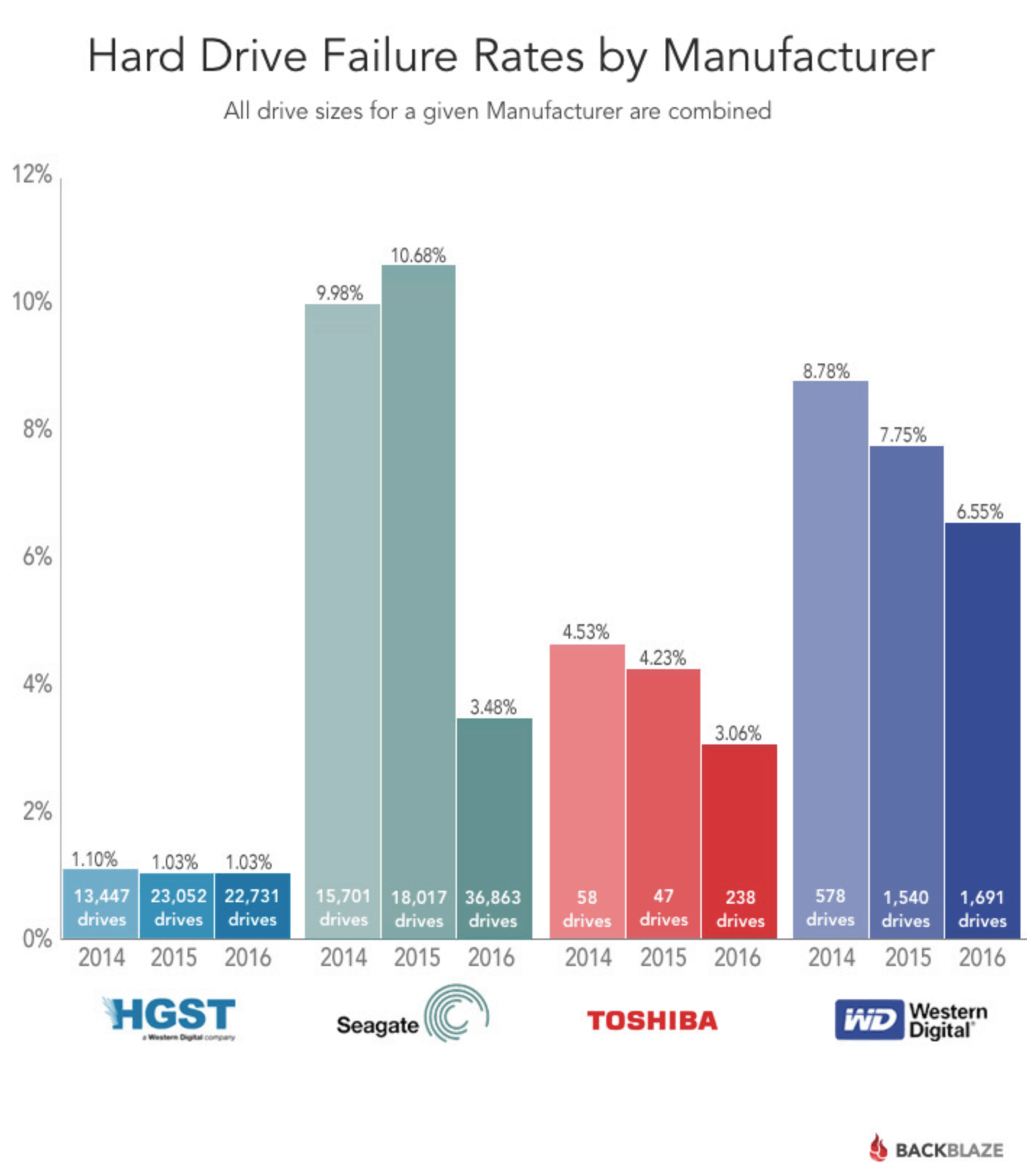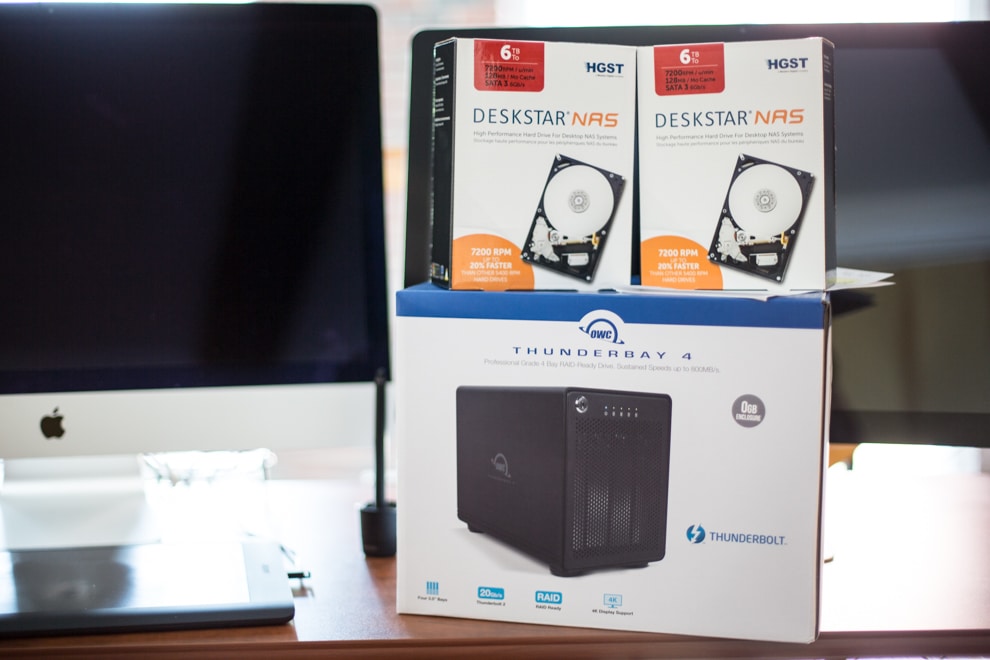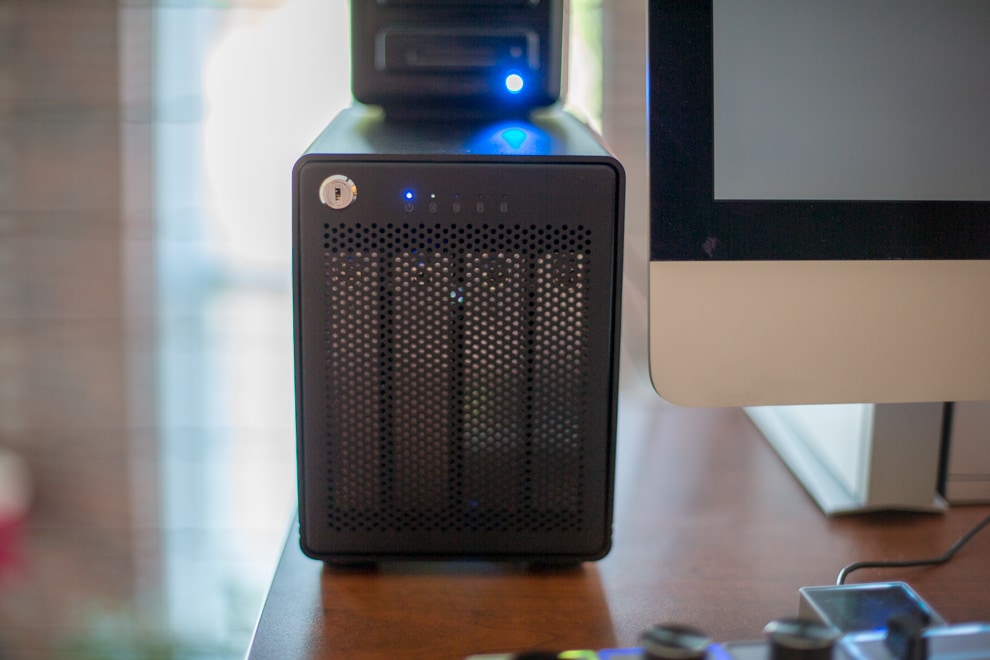It’s now December 2021, and our ‘A Better Hard Drive Solution’ post (original is intact below) needs a little updating. Everything we said when this was first published ~5 years earlier holds true. However, there are some new thoughts on what’s currently available that are worth sharing.
Update: Hard Drive Brand
https://eshop.macsales.com/The HGST drives so acclaimed in the original post are harder to find now, but some are still listed with sites such as Other World Computing (macsales.com). The most important thing is to get a hard drive that is rated as an “enterprise” grade unit. One built to churn and spin all day long in the hard environment of a server.
Update: Hard Drive Size
When this first posted, 6TB hard drives were positively HUGE. They still are, actually. But 12TB, 14TB, even 18TB drives are now easy to find, and don’t cost much more than the smaller drives did a few years ago. Our current drives for past few years are 12TB, and we’re planning on using 18TB drives starting with our 2022 installation. Oh, and we are writing our images files to two drives at once using RAID configuration. More on that below.
Update: Thunderbay enclosures
The 4-bay drive unit shown in the original post continues to be available. But, we’re now running three of the 4-bay enclosures. The good news is that an 8-bay version of this enclosure is now available. We have one arriving any day now.
Update: RAID configuration
Since the original post, we are now configuring our drives as RAID-1, mirroring. This writes every file to two drives at once. If one drive fails, the data is safe on the other, at which time, were this to happen, a new copy would be made to a replacement drive.
Here the large 18GB drive capacity and the 8-bay configuration of the Thunderbolt 8 dock pays big dividends. Setting up RAID-1 like this means that two drives are needed; two bays in the enclosure are needed, and all this is twice the cost. But the data is very secure. And, even though you’re buying (in the case of 18GB drives) 36GB of drive space, the actual capacity is still 18GB because the files are written twice. There’s lots of good information about RAID configurations available on line and on sites such as YouTube.
In summary
The above updates and the below original post still equal a great solution to the massive amount of important files that photographers and videographers need to safely access and store. Happy data management!!!
The original post from 2016:
A Better Hard Drive Solution | Maine Wedding Photographers
For years, storing critical image files in our studio has been assigned to external hard drives. Not that long ago, drives weren’t near the capacity that they are today, and it actually took as many as three each year to hold all our photos from our season of weddings. Needless to say, this meant quite the inventory of drives, power supplies, power cords, and USB cables. There needs to be a better hard drive solution. Of course, too, there are replicate copies on backup drives. Want to know more about how we backup our files? Check out this post from a little while back. Thankfully, 6TB and larger external drives are common place these days, and 6TG is large enough to hold a year’s worth of still images for us, with room to spare.But, what if a hard drive fails?
We do have a rigorous backup protocol as outline in the linked article above. But, the best solution is to do what you can to minimize the chances of a crash in the first place. One way to do that is to steer toward using brands of hard drives with the lowest failure rate. Recently, on an online pro photographer forum, I saw a post where participants were talking about how their LaCie brand drives were prone to failure. I took special note, since I have several LaCie 6TB drives. (LaCie is a line of hard drives, often in svelte cases, that actually contain Seagate drives inside, as LaCie is a Seagate company.) It wasn’t a day later than one of my LaCie drives stopped turning on. I kept my fingers crossed that this meant it was a power supply failure rather than a crashed hard drive. (More on that later). I set out at that time to do some research as to what the most (and least) dependable brands of hard drives are. The results were interesting.Hard Drive Failure Rates
 Like any statistical data, it can be sliced and diced in so many ways that the results can often appear to be whatever one wants them to be. But, this was different. In every chart I perused, including ones like this from the Backblaze people, who really know what hard drives are all about, one brand stood out with a failure rate way below the next best. That brand is HGST, which is actually a division of Western Digital. I saw what I needed to know: I want my data on HGST drives. Period, end of story. Well, turns out that HGST drives only come in ‘internal’ drive format, not self-contained external drives. Which wasn’t a problem for long as this pointed me to doing what I had been intending to do for some time: switch over to a multi-bay hard drive enclosure system. I wanted Thunderbolt interface for my Mac, and Other World Computing came to the rescue. They sold the enclosure I needed, plus, yay(!) they sell HGST drives. Perfection!
Like any statistical data, it can be sliced and diced in so many ways that the results can often appear to be whatever one wants them to be. But, this was different. In every chart I perused, including ones like this from the Backblaze people, who really know what hard drives are all about, one brand stood out with a failure rate way below the next best. That brand is HGST, which is actually a division of Western Digital. I saw what I needed to know: I want my data on HGST drives. Period, end of story. Well, turns out that HGST drives only come in ‘internal’ drive format, not self-contained external drives. Which wasn’t a problem for long as this pointed me to doing what I had been intending to do for some time: switch over to a multi-bay hard drive enclosure system. I wanted Thunderbolt interface for my Mac, and Other World Computing came to the rescue. They sold the enclosure I needed, plus, yay(!) they sell HGST drives. Perfection! 
A New Hard Drive
Today, this arrived via UPS. A Thunderbay 4 four-drive enclosure with slots for up to four internal hard drives. I started with two 6TB HGST drives and will very soon be adding two more in the available bays. Installation was a breeze; unpack the enclosure, open the case, remove an empty tray, unpack a drive, screw it into the tray, and slide the tray in a secure with a thumbscrew. Repeat for additional bays. Power it up, and plug in the included Thunderbolt cable. Format the drives using the Mac’s disk utility. In 15 minutes you have as many terabytes of data as you wish. You could have four 1TB SSDs to give you a modes 4TB of storage (albeit ridiculously dependable!) or you could have a monster powerhouse of 4 8TB drives for 32TB of storage. I don’t think 32TB of storage existed in the whole world a couple of decades ago, and there it all is, right on your own desktop!! The plan is to have one 6TB drive for each of the most recent 4 years in the enclosure, with a new drive each year going in and the oldest drive then sliding out and being stored safely away.Simplifying Storage
I’m now migrating all those loose external drives over to my new and wonderful storage solution. The peace of mind knowing I am running highly dependable drives is priceless. The lack of clutter pacifies my OCD mind to no end. Keep in mind there is just one Thunderbolt cable, and one power cord, instead of the way it was with redundant everything for each external drive. Oh, that LaCie external drive I mentioned that wouldn’t turn on? I unplugged it, of course, opened it up, unscrewed the actual drive, slipped it in an empty rack in my new enclosure (since it is the exact size of the drives the enclosure uses), and it was alive and well. (Yay!) It’s getting copied over to the new HGST drive in one of the bays as I write this. One last look at the newer, better hard drive solution, ably serving to hold years worth of images.
One last look at the newer, better hard drive solution, ably serving to hold years worth of images.